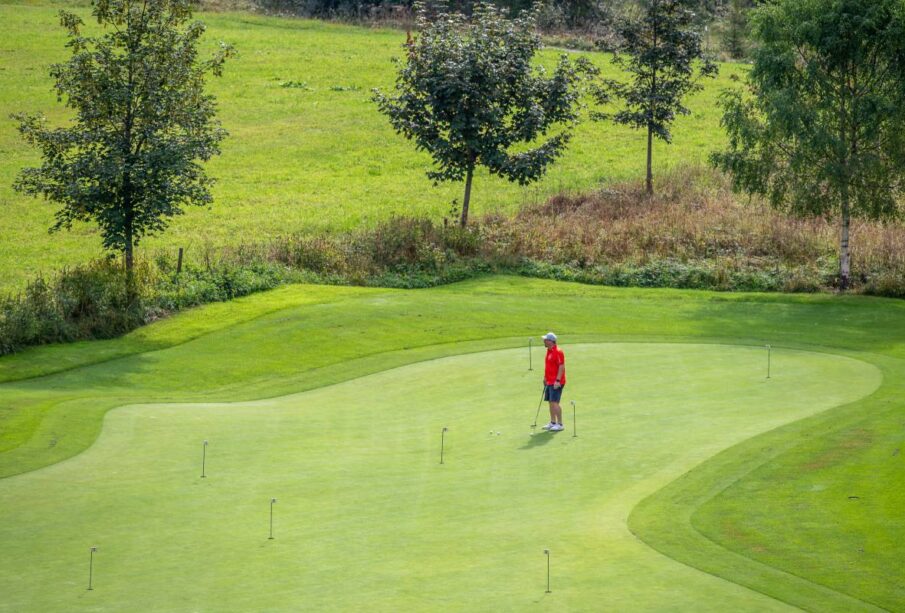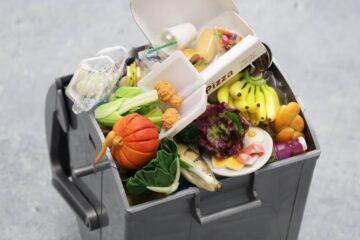What Grass Is the Best for a Golf Course?

Creating and maintaining a high-quality golf course requires precision, consistency, and the right grass selection. Grass type directly influences how the course plays, feels, and looks. The turf needs to endure constant foot traffic, mowing, and varying weather conditions — all while providing an even and attractive playing surface.
Choosing the right grass for a golf course isn’t as simple as picking something green. It depends on the local climate, soil type, shade exposure, and even the part of the course it will cover — fairways, greens, roughs, or tees. Let’s explore the most suitable grass varieties used in golf courses and understand what makes them perform exceptionally well.
Key Considerations When Choosing Golf Course Grass
Before naming specific grass species, it’s important to understand the key environmental and practical factors that influence the decision:
-
Climate:
Australia’s diverse climate means that golf courses in New South Wales face different conditions compared to those in Queensland or Victoria. Cool-season grasses thrive in southern states, while warm-season grasses are preferred in tropical or subtropical regions. -
Maintenance Requirements:
Some grass types require more frequent mowing, watering, and fertilising than others. Golf courses must balance playability and aesthetics with practicality and maintenance costs. -
Wear and Recovery:
Golf courses are constantly walked, driven over by golf carts, and subjected to impact from clubs. The best grasses are those that recover quickly from damage and maintain their texture under stress. -
Soil and Drainage:
Well-drained soil supports healthy turf. Some grass species perform better in sandy soils, while others tolerate clay-rich or saline conditions. -
Playing Quality:
Golfers value consistent ball roll, smooth fairways, and resilient roughs. The right grass helps maintain these conditions year-round.
Best Grass Types for Golf Courses in Australia
Different sections of a golf course require different grass types. The grass on the putting green must be tightly mown and smooth, while fairways and roughs require durability and texture. Below are the top varieties commonly used on Australian golf courses — and the reasons why.
1. Couch Grass (Bermuda Grass)
Scientific Name: Cynodon dactylon
Best for: Fairways, tees, and roughs
Couch grass is one of the most popular warm-season grasses for golf courses across Australia. Known for its resilience and fine texture, it offers a lush green surface that stands up to wear and tear.
Advantages:
-
Thrives in full sun and warm climates.
-
Grows rapidly, providing quick recovery from divots and foot traffic.
-
Tolerates drought conditions once established.
-
Dense growth prevents weeds.
Drawbacks:
-
Doesn’t perform well in shade.
-
May go dormant (turn brown) during winter in cooler regions.
Best suited areas:
Queensland, Northern New South Wales, and Western Australia — regions with abundant sunshine and warm temperatures.
Popular varieties:
-
Tifway 419: Known for its durability and quick recovery.
-
Wintergreen Couch: Common for fairways due to its fine leaf and bright colour.
2. Bentgrass
Scientific Name: Agrostis stolonifera
Best for: Greens and tees
Bentgrass is the gold standard for putting greens, especially in cooler climates. It can be mown very short, creating a smooth, fast surface ideal for putting.
Advantages:
-
Produces a dense, fine-textured turf.
-
Excellent ball roll and uniformity.
-
Tolerates close mowing (down to 3 mm).
-
Performs well in temperate climates.
Drawbacks:
-
High maintenance — requires frequent watering and mowing.
-
Sensitive to heat and drought.
-
Susceptible to disease in humid conditions.
Best suited areas:
Southern states like Victoria, Tasmania, and southern New South Wales where summers are mild.
Popular varieties:
-
Penn A-4: Used in many championship courses for its smooth texture.
-
Creeping Bentgrass: A top choice for greens due to its dense coverage.
3. Zoysia Grass
Scientific Name: Zoysia japonica
Best for: Fairways, tees, and roughs
Zoysia is gaining popularity for golf courses because it combines beauty, durability, and low maintenance. Its dense growth and slow growth rate make it an eco-friendly choice.
Advantages:
-
Highly drought-tolerant and water-efficient.
-
Handles moderate shade better than Couch.
-
Resistant to pests and diseases.
-
Requires less mowing compared to other warm-season grasses.
Drawbacks:
-
Slow to establish.
-
Can be expensive to install initially.
Best suited areas:
Ideal for subtropical and coastal areas, such as Queensland and Northern NSW.
Popular varieties:
-
Empire Zoysia: Loved for its soft texture and wear tolerance.
-
Zoysia Matrella: Provides a premium look and dense coverage.
4. Kikuyu Grass
Scientific Name: Pennisetum clandestinum
Best for: Fairways and roughs
Kikuyu is a hardy, warm-season grass that thrives in many Australian conditions. It’s often used for fairways due to its ability to recover quickly from damage and stay green throughout summer.
Advantages:
-
Fast-growing and self-repairing.
-
Excellent wear tolerance.
-
Maintains vibrant colour in heat and drought.
-
Adaptable to a variety of soils.
Drawbacks:
-
Requires regular mowing due to rapid growth.
-
Can invade surrounding areas if not controlled.
-
Poor cold tolerance — may yellow in winter.
Best suited areas:
Popular in Sydney, Perth, and coastal regions where temperatures stay mild year-round.
Popular varieties:
-
Kenda Kikuyu: A sterile hybrid offering improved density and wear resistance.
-
Village Green Kikuyu: A darker green, fine-leafed option for fairways.
5. Perennial Ryegrass
Scientific Name: Lolium perenne
Best for: Overseeding and cool-season courses
Perennial Ryegrass is commonly used on golf courses in cooler climates or as a transitional grass to maintain colour and playability during winter.
Advantages:
-
Germinates quickly for fast establishment.
-
Provides a bright green colour year-round.
-
Creates a smooth, even playing surface.
-
Ideal for overseeding warm-season grasses in winter.
Drawbacks:
-
High water and nutrient requirements.
-
Doesn’t tolerate extreme heat or drought.
-
Requires frequent mowing.
Best suited areas:
Southern Australia — Tasmania, Victoria, and South Australia — where winters are cool and moisture levels are higher.
Popular varieties:
-
Barorlando and SR 4200 — prized for their durability and winter performance.
6. Tall Fescue
Scientific Name: Festuca arundinacea
Best for: Roughs and shaded areas
Tall Fescue is a cool-season grass with a coarse texture, often used for roughs or shaded areas around the course.
Advantages:
-
Tolerates shade better than most warm-season grasses.
-
Deep roots make it drought-resistant.
-
Requires less mowing than Ryegrass.
Drawbacks:
-
Coarser texture — not ideal for fairways or greens.
-
Slower to repair after damage.
Best suited areas:
Cooler, shaded parts of golf courses, particularly in southern states.
Matching Grass to Course Areas
A single grass type rarely covers an entire golf course. Instead, different sections are planted with specific varieties suited to their conditions and playing requirements.
| Course Area | Recommended Grass Types |
|---|---|
| Putting Greens | Bentgrass (Agrostis stolonifera), Hybrid Bermuda |
| Fairways | Couch Grass, Kikuyu, Zoysia |
| Roughs | Kikuyu, Tall Fescue, Zoysia |
| Tees | Couch Grass, Zoysia, Bentgrass |
| Shade Areas | Zoysia, Tall Fescue |
This combination ensures the course remains playable, visually stunning, and sustainable throughout the year.
Maintaining Golf Course Grass
Even with the best grass selection, maintenance determines how well it performs. Regular care practices include:
-
Mowing: Consistent height and frequency prevent stress and promote uniform texture.
-
Irrigation: Automated systems help conserve water while maintaining ideal moisture.
-
Fertilisation: Balanced nutrient management supports colour and growth.
-
Aeration: Reduces compaction and improves root health.
-
Pest and Weed Control: Prevents damage and competition for nutrients.
Adopting modern turf management practices and working with reliable turf suppliers ensures long-lasting performance.
Final Thoughts
Choosing the best grass for a golf course depends on your region’s climate, soil type, and the level of maintenance you’re willing to commit to. For warmer climates, Couch, Zoysia, and Kikuyu dominate fairways and roughs, while Bentgrass continues to set the standard for smooth, championship-quality greens in cooler areas.
Each grass brings unique strengths, and blending varieties strategically across course zones helps achieve a perfect balance of beauty, durability, and playability.
For those looking to source premium-quality turf for golf courses, sports fields, or residential lawns, A View Turf offers top-grade grass varieties tailored to Australian conditions. Their expert advice and premium turf options ensure your course maintains professional standards all year round.




